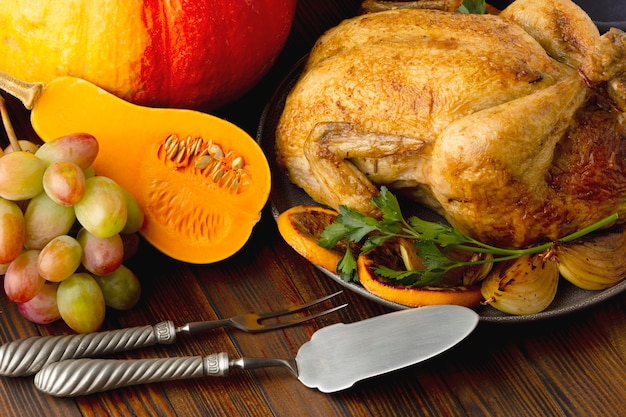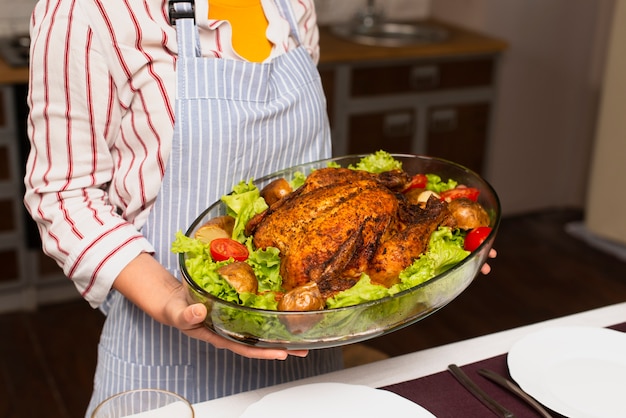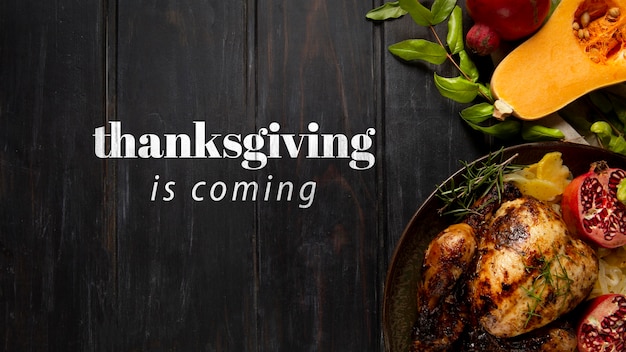Let's face it, Thanksgiving, Christmas, or any festive gathering wouldn't be the same without a perfectly roasted turkey. It's the star of the show, and a dry, overcooked bird can be a real party foul. But fear not, my fellow cooks! I'm here to guide you through the art of cooking a juicy, flavorful turkey that'll have everyone singing your praises. After years of trial and error (and a few burnt birds), I've learned a thing or two about turkey temperatures, and I'm ready to share it all.
Part 1: The Basics of Turkey Temperature

The foundation of a perfectly cooked turkey lies in understanding the role of temperature. We're talking about both the internal temperature of the bird and the temperature of your oven. Get these right, and you're on your way to a culinary triumph.
Internal Temperature: The Golden Rule
The absolute golden rule for turkey cooking is to reach an internal temperature of 165°F (74°C) in the thickest part of the thigh. This ensures the meat is cooked through and safe to eat. You might hear people say you want the breast to reach 165°F too, but that's not entirely true. The breast will cook more quickly and you'll actually overcook it if you aim for that temperature.
Oven Temperature: The Slow and Steady Approach
Now, the oven temperature is a bit more flexible, but I generally recommend a lower temperature for a longer cooking time. This is the secret to a juicy, tender turkey. You want the bird to cook slowly and evenly, allowing the juices to stay locked in. Aim for 325°F (160°C). cooking a turkey at a lower temperature will take longer, but the results will be worth it.
Part 2: The turkey thermometer – Your Culinary Compass

Never even think about roasting a turkey without a trusty meat thermometer. It's the one tool you can't live without. You can pick one up for a few pounds at most supermarkets or online – it's a worthwhile investment for any home cook.
Why You Need a Thermometer: Beyond Just Checking
It's a simple truth: you can't rely on your eyes or intuition to tell you if a turkey is cooked through. The thermometer is your ultimate guide. It's the only way to be absolutely sure you've reached that critical 165°F (74°C) mark in the thigh, ensuring a safe and delicious meal.
How to Use a Thermometer: It's Simple!
Using a meat thermometer is child's play. Just insert the probe into the thickest part of the thigh, making sure it doesn't touch any bones. Wait a few seconds for the temperature to stabilize, then take a peek.
Part 3: Turkey Size Matters: More Than Just Looks

We can't talk about turkey cooking without addressing the elephant in the room (or should I say, the turkey in the oven?) – size matters. A petite bird will cook much faster than a giant one, so you need to factor that in when figuring out cooking times.
Calculating Cooking Time: A Starting Point
A good rule of thumb for a turkey cooked at 325°F (160°C) is to allow about 15 minutes per pound. So, a 12-pound turkey will take roughly 3 hours. But remember, this is just a starting point. You need to take other factors into account.
Adjusting for Stuffing: Longer Cooking Time
Here's where things get a bit trickier. If you're stuffing your turkey, add about 30 minutes to the total cooking time. Stuffing needs a bit longer to heat through, and it's important to ensure it reaches 165°F (74°C) as well.
Don't Forget the Rest!
Once your turkey is cooked, don't rush into carving it up. Give it a good rest for at least 15 minutes, covered with foil. This allows the juices to redistribute throughout the meat, resulting in a more succulent and flavorful turkey. Trust me, it's worth the wait!
Part 4: The Big Day – Prepping Your Turkey: Getting Ready to Roast
The day has arrived! You're about to cook that beautiful turkey. Let's make sure we're prepared:
Brining: A Secret Weapon
Brining is a fantastic way to add moisture and flavor to your turkey. It involves soaking the bird in a salt water solution for several hours. The salt helps to draw out moisture from the turkey, but it's replaced by the water in the brine, resulting in a juicy bird. There are plenty of easy brining recipes online, but you can also experiment with different flavors.
Butterflying: For Large Birds
If you're dealing with a large turkey, consider butterflying it. This involves splitting the breastbone and laying the bird flat. Butterflying helps the turkey cook more evenly and can be a lifesaver for big birds.
Stuffing: Tradition with a Twist
Stuffing your turkey is a classic tradition, but it does pose some safety risks. Ensure your stuffing is cooked through to 165°F (74°C). You can also cook your stuffing separately in a casserole dish, which might be safer, especially for beginners.
Part 5: Cooking the Turkey – The oven method: The Traditional Approach
Ready to get roasting? Let's break down the oven method step-by-step:
Preheating: A Crucial First Step
Always preheat your oven to 325°F (160°C). This ensures the turkey cooks evenly and helps prevent it from drying out.
Placing the Turkey: Rack or No Rack?
Place the turkey in a roasting pan, breast side up. If you're using a roasting rack, this will allow air to circulate around the bird and ensure even cooking.
Basting: A Simple Tip for Moisture
Basting the turkey throughout cooking helps to keep it moist and adds flavor. You can use melted butter, chicken stock, or even a flavorful herb mixture for basting. I like to use a mixture of butter, garlic, and herbs, but you can experiment with your own flavors.
Cooking Time: The Starting Point
The turkey needs to cook for roughly 15 minutes per pound at 325°F (160°C), but remember to add 30 minutes if you're stuffing it.
Checking the Temperature: The Final Test
Don't forget to use your trusty meat thermometer to check the internal temperature. You want it to reach 165°F (74°C) in the thickest part of the thigh.
Part 6: Alternative Cooking Methods: Beyond the Oven
While oven roasting is the traditional method, there are other ways to cook a turkey:
slow cooker: A Hands-Off Approach
This is a great option for a moist and tender turkey. It might take a bit longer, but it's hands-off and perfect for busy cooks.
Air Fryer: The Quick and Efficient Option
Air fryers are becoming increasingly popular, and they can cook a turkey surprisingly well. You'll need a large air fryer for a whole turkey, but it's a quick and efficient method.
Smoker: For a Smoky Flavor
For a truly smoky flavour, consider smoking your turkey. This requires a smoker, but it's a fantastic way to add a unique dimension to your bird.
Part 7: Carving and Serving: The Grand Finale
The moment of truth has arrived! It's time to carve that beautiful turkey.
Letting the Turkey Rest: A Must-Do
As mentioned earlier, let the turkey rest for at least 15 minutes before carving. This allows the juices to redistribute, resulting in a tastier turkey.
Carving Tips: A Simple Guide
Use a sharp carving knife and a carving fork to lift the bird. Start by carving the breast, then move on to the legs and thighs.
Serving: A Feast for the Senses
Serve the turkey with your favourite sides, such as mashed potatoes, gravy, stuffing, and cranberry sauce. Don't forget to include some extra gravy for those who enjoy it!
Part 8: Storage and Leftovers: Making the Most of Your Turkey
You've cooked the perfect turkey, but what about leftovers?
Storing the Turkey: Keeping It Fresh
Refrigerate any leftover turkey within two hours of cooking. Store it in an airtight container in the refrigerator for up to four days.
Using Leftovers: Getting Creative
Leftover turkey can be used in a variety of dishes, such as turkey sandwiches, turkey salad, turkey soup, or even turkey pot pie.
Part 9: turkey tips and Tricks: Pro Tips for Perfect Results
Here are a few extra tips and tricks to make your turkey cooking experience even better:
Using a Roasting Rack: A Simple Trick
A roasting rack allows air to circulate around the turkey, resulting in more even cooking.
Basting Regularly: Adding Moisture and Flavor
Basting helps keep the turkey moist and adds flavour.
Don't Overcook: A Common Mistake
Overcooking a turkey can result in dry, tough meat.
Don't Overstuff: Allowing for Even Cooking
Stuffing the turkey too tightly can prevent it from cooking evenly.
Don't Forget the Legs: Ensuring They're Cooked Through
Make sure the legs are fully cooked, as they tend to take a bit longer.
Use a Meat Thermometer: A Must-Have
This is essential for ensuring the turkey is cooked through.
Part 10: Troubleshooting – Turkey Problems and Solutions: Solving Common Issues
We've all been there – something goes wrong with the turkey. But don't panic! Here are some common problems and solutions:
Dry Turkey: Adding Moisture
If your turkey is dry, it might be overcooked. Next time, try cooking it at a lower temperature. You can also add some extra moisture by basting it more often.
Unevenly Cooked Turkey: Ensuring Even Cooking
This often happens when the turkey isn't roasted evenly. Make sure it's placed in the center of the oven and rotate it halfway through cooking.
Overcooked Turkey: Recovering from Overcooking
If you've overcooked the turkey, there's not much you can do about it. However, you can try slicing it thinly and serving it with a rich gravy to add some moisture.
Part 11: FAQs – Your Turkey Questions Answered: Clarifying Common Concerns
Let's tackle some frequently asked questions about turkey cooking:
Can I Freeze a Turkey?
Yes, you can freeze a whole turkey for up to two months. Make sure it's wrapped tightly in freezer paper or plastic wrap. Thaw the turkey in the refrigerator for several days before cooking.
How Long Should I Cook a stuffed turkey?
A stuffed turkey needs to cook for about 30 minutes longer than an unstuffed turkey.
What Should I Do With Leftover Turkey?
Leftover turkey is a versatile ingredient. You can use it to make turkey sandwiches, turkey salad, turkey soup, or even turkey pot pie.
What’s the Best Way to Reheat Turkey?
You can reheat leftover turkey in the oven, on the stovetop, or in the microwave.
What Happens If I Don’t Have a Meat Thermometer?
A meat thermometer is the best way to ensure your turkey is cooked through, but if you don't have one, you can use the "finger test" method. Press the thickest part of the thigh, and if it feels firm and gives back a slight resistance, it's likely cooked through. However, this method is less accurate than using a thermometer.
What About Brining? Does It Really Make a Difference?
The science behind brining is simple: salt draws out moisture from the turkey, but it's replaced by the water in the brine. This results in a juicier, more flavorful turkey. It's definitely worth trying, especially if you're concerned about dryness.
What's the Difference Between White and Dark Meat?
White meat, like the breast, is leaner and cooks faster than dark meat, which is richer and takes longer. This means the breast will be cooked through before the thighs, so be mindful of that when checking the internal temperature.
Should I Remove the Turkey from the Oven to Let It Rest?
Yes, absolutely! Letting the turkey rest for 15 minutes allows the juices to redistribute throughout the meat, resulting in a much juicier and flavorful bird.
How Can I Make Sure the Stuffing Is Cooked Through?
The stuffing needs to reach an internal temperature of 165°F (74°C). You can use a meat thermometer to check the stuffing, but if you're unsure, it's always best to cook the stuffing separately in a casserole dish.
How Long Can I Keep Leftover Turkey in the Fridge?
Leftover turkey can be stored in the refrigerator for up to four days in an airtight container.
Can I Reheat Turkey in the Microwave?
While it's not the most ideal method, you can reheat leftover turkey in the microwave. But it's best to use a microwave-safe container and cover it to prevent drying out.
So there you have it! My ultimate guide to turkey cooking. You're now armed with the knowledge and confidence to cook a beautiful, juicy, and delicious turkey that'll impress your family and friends. Happy cooking!
Everyone is watching

Corn on the Cob: The Ultimate Guide to Perfectly Cooked Ears
Healthy MealsAh, corn on the cob. Just the name evokes images of sunny days, barbecues, and that sweet, juicy flavour that ...

Perfect Pork Roast Oven Cooking Time: A Guide to Delicious Results
Healthy MealsThere's something truly satisfying about a perfectly roasted pork. The aroma alone is enough to make your mout...

Ham Cooking Time: How Long to Bake, Smoke, or Boil a Delicious Ham
Healthy MealsAh, ham. It's a classic, isn't it? A real crowd-pleaser, especially around holidays. And when done right, it'...

Scallops: The Ultimate Guide to Perfect Cooking
Healthy MealsAh, scallops. Those delicate, sweet, and utterly delicious morsels of the sea. They hold a special place in my...

Spaghetti Squash: The Ultimate Guide to Cooking and Serving
Healthy MealsRemember that time you saw spaghetti squash at the supermarket, looking all bumpy and strange, and thought, "W...
